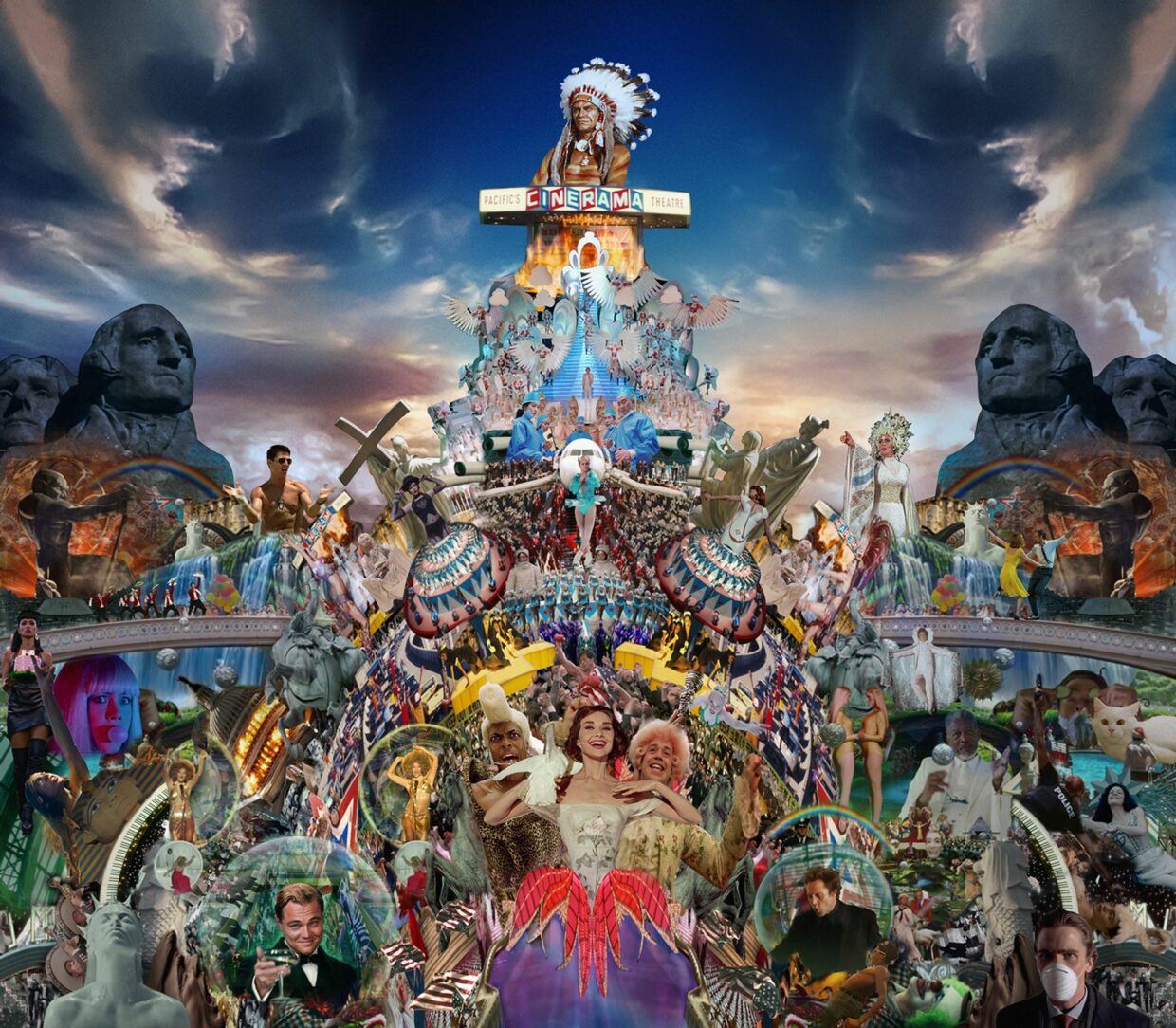Maximalist magic: Marco Brambilla’s Heaven’s Gate plays the scale game in virtual reality
Nov. 22, 2021
The Art Newspaper’s XR Panel
What exactly is extended reality (XR) and how is it being used in art? We bring together an international group of experts in the field to review and make sense of the cutting-edge, digital work that artists, museums, galleries and app-makers are creating across the spectrum of XR—from augmented to virtual reality.
Each XR review gives an overview of a project and a statement from the creators before our expert panel rates it based on ease of use, how good the art is, the medium-specific qualities it employs and whether it breaks new ground.
Heaven’s Gate, by Marco Brambilla
Marco Brambilla’s Heaven’s Gate is at Pérez Art Museum Miami (PAMM) until January 2022, as a video projection or on virtual reality (VR) headsets. The experience loops every 4 minutes 45 seconds, and is shown continuously during museum hours.
During Art Basel in Miami Beach—1 to 5 December 2021—the museum will showcase a larger VR viewing event using 20 HTC Vive Flow headsets, allowing a large group to experience Heaven’s Gate simultaneously.
Marco Brambilla will be giving a talk at PAMM with the museum’s director Franklin Sirmans at 1pm on Friday 3 December.
It was previously previewed at the Shed in New York City, during Frieze New York (5-9 May 2021).
Our panellists reviewed the experience remotely on Oculus Quest 2 headsets.
Curator’s note
The Italian-born, London-based, Canadian artist and film director Marco Brambilla has been making video waves recently with some arresting explorations of art and drama in extended reality (XR). In September to November 2020 he showed The Four Temperaments at Michael Fuchs Galerie in Berlin. It features the actress Cate Blanchett and reimagines the theory of “personality types” based on four fundamental humours: sanguine, choleric, melancholic and phlegmatic. At the same time, Brambilla made the experience available on the Acute Art augmented reality (AR) smartphone app.
Thanks to the Covid-19 pandemic, Brambilla’s collaboration with Marina Abramović on her monumentally conceived 7 Deaths of Maria Callas was given its first performance from the Staatsoper in Munich in April 2020 through livestream only. Brambilla created the tempestuous cloud-imagery video intermezzi representing the changing moods of the Greek-American opera diva, one of the greatest musicians of the 20th century. The work’s scale could be appreciated for the first time at its first performance in front of an audience, at the same venue, in July 2021 with Abramović representing Callas on her Parisian death bed in 1977.
Scale is at the heart of Brambilla’s Heaven’s Gate. It is “a video monument to Hollywood’s veneration of glamour”, as Brambilla puts it, “while retelling the history of the world in seven distinct phases”. In his complex, looping, immersive, collage, Brambilla uses existing footage to create a digital tableau as a human figure ascends through seven stages of life, a parallel to the mountainous seven levels of Dante’s Purgatory.
For audiences viewing it projected in 2D, in a museum setting, the narrative moves from bottom upwards, borrowing the narrative style of a Native American totem pole. And Brambilla addresses, in his abundant, crowded imagery, one of the areas of great artistic potential in virtual reality: playing with scale and its relationship to time.
Our panel viewed Heaven’s Gate on the Oculus Quest 2 (soon to be rebranded as the Meta Quest 2). It is a headset whose optical performance, at a competitive price, is remarkable when one looks back at the first Oculus Rift headsets to come to market in 2014. But, as Eron Rauch points out below, it is still a piece of hardware that can reproduce only a lower-resolution version of the 8K majesty of Brambilla’s original file. That is a calculus that artists, publishers and museums will have to engage with for some time to come—just as Corning Museum had to do with its beautifully conceived VR recreation of the Glass Drawing Room at Northumberland House—when using a consumer-level VR headset to present lower resolution experiences of high-fidelity work.
Source: The Art Newspaper

